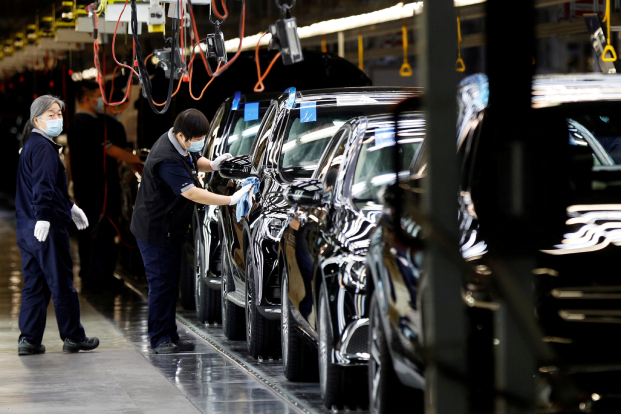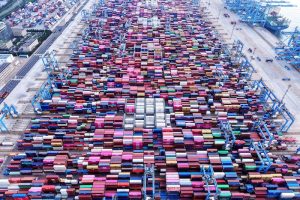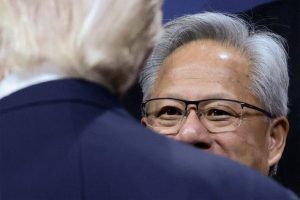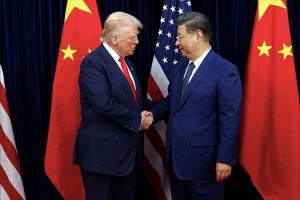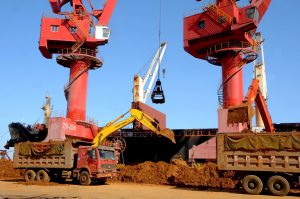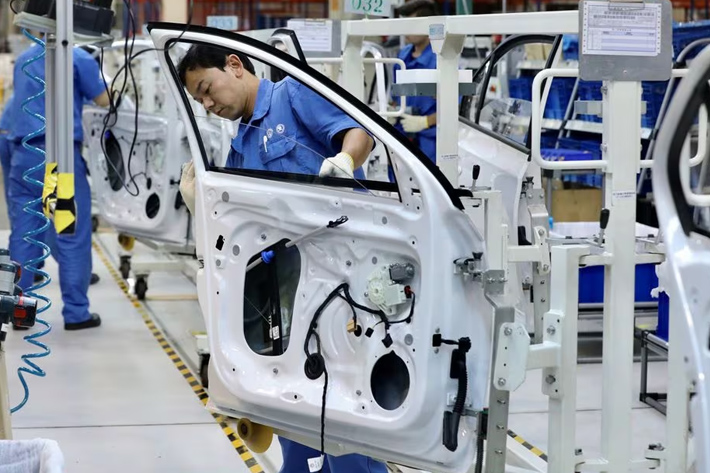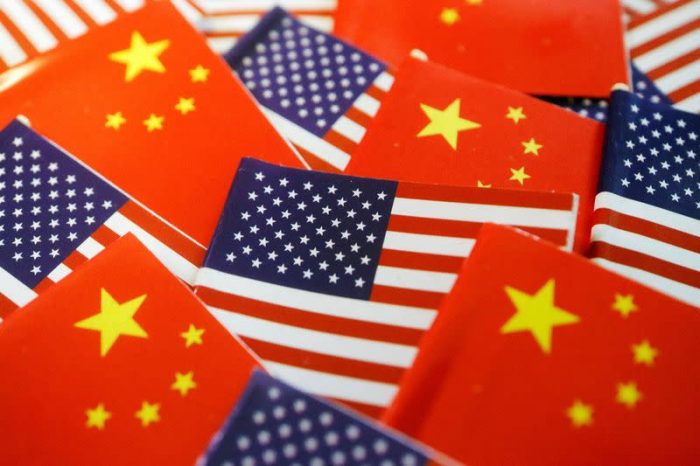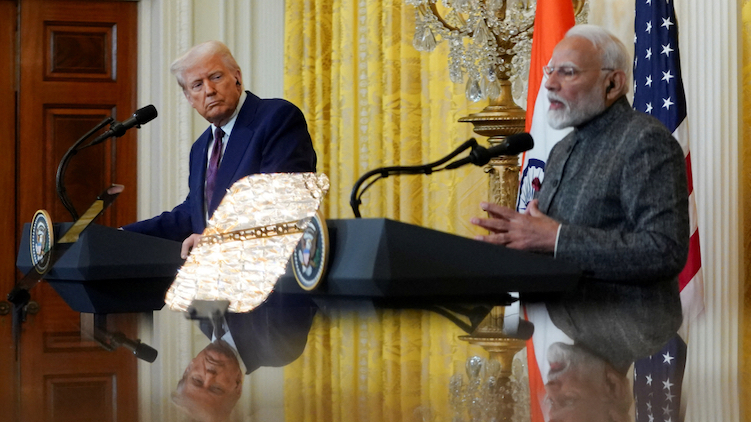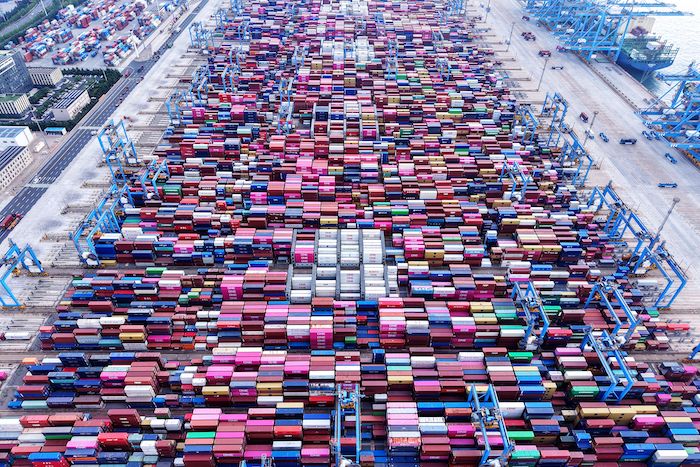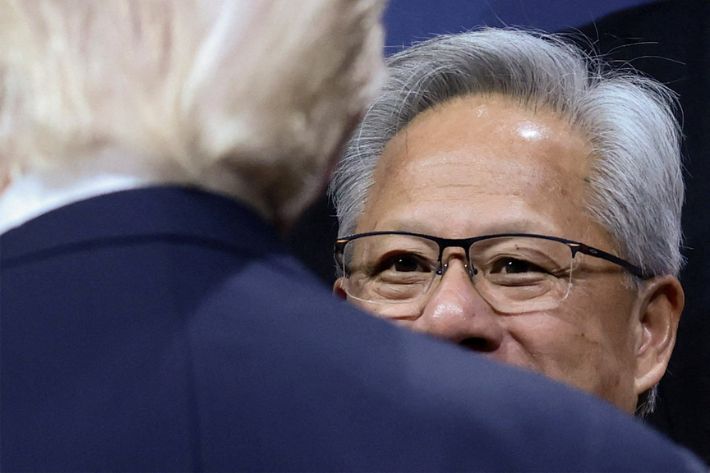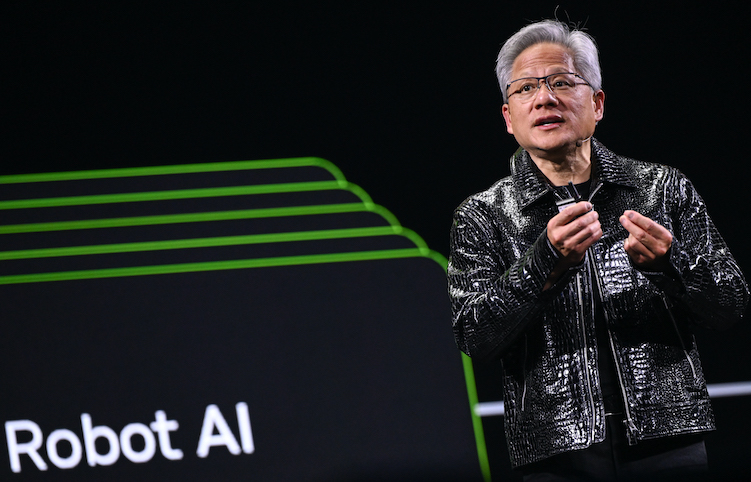China’s economy has begun to look weak and uncertain. The impact of US tariffs has rocked President Xi Jinping’s focus on manufacturing and failure to bolster social services.
Export growth slowed to a three-month low in May as US tariffs hammered shipments, while factories suffered amplified producer deflation in May – which sank to its worst level in two years, while the decline in consumer prices continued.
US President Donald Trump’s global trade war and the swings in Sino-US trade ties over the past two months sent Chinese exporters, and their business partners across the Pacific, on a roller-coaster ride. They heaped pressure on the world’s second largest economy and hobbled world growth.
ALSO SEE: China Export Curbs on Rare Earth Magnets: a Trade War Weapon
Exports to US down a third
Customs data showed that China’s exports to the US plunged 34.5% year-on-year in May in value terms, the sharpest drop since February 2020, when the outbreak of the Covid-19 pandemic upended global trade.
Total exports from the Asian economic giant expanded 4.8% year-on-year in value terms last month, slowing from the 8.1% jump in April, customs data showed on Monday.
“It’s likely that the May data continued to be weighed down by the peak tariff period,” Lynn Song, chief economist for Greater China at ING, said.
Song said there was still front-loading of shipments due to the tariff risks, while acceleration of sales to regions other than the United States helped to underpin China’s exports.
Imports dropped 3.4% year-on-year, deepening from the 0.2% decline in April and worse than the 0.9% downturn expected in the Reuters poll.
China’s imports from the US also lost further ground, dropping 18.1% from a 13.8% slide in April.
Exports had surged 12.4% year-on-year and 8.1% in March and April, respectively, as factories rushed shipments to the US and other overseas manufacturers to avoid Trump’s hefty levies on China and the rest of the world.
Trade talks underway in London
Exporters in China found some respite in May as Beijing and Washington agreed to suspend most of their levies for 90 days, but tensions between the world’s two largest economies remain high and negotiations are underway again on issues ranging from China’s rare earths controls to Taiwan.
In a phone call on Thursday, President Trump and Chinese leader Xi Jinping discussed trade tensions and critical minerals, but they left key issues for further negotiations, which are due to resume in London today (June 9).
Zichun Huang, economist at Capital Economics, expects the slowdown in exports growth to “partially reverse this month, as it reflects the drop in US orders before the trade truce,” but cautioned that shipments would be knocked again by year-end due to elevated tariff levels.
China’s exports of rare earths jumped sharply in May despite export restrictions on certain types of rare earth products causing plant closures across the global auto supply chain.
The latest figures do not distinguish between the 17 rare earth elements and related products, some of which are not subject to restrictions. A clearer picture of the impact of the curbs on exports will only be available when more detailed data is released on June 20.
China’s May trade surplus came in at $103.22 billion, up from the $96.18 billion the previous month. Other data, also released on Monday, showed China’s imports of crude oil, coal and iron ore dropped last month, underlining the fragility of domestic demand at a time of rising external headwinds.
Beijing in May rolled out a series of monetary stimulus measures, including cuts to benchmark lending rates and a 500 billion yuan low-cost loan program, aimed at cushioning the trade war’s blow to the economy.
China’s markets showed a muted reaction to the data. The blue-chip CSI300 Index climbed 0.29% and the benchmark Shanghai Composite Index was up 0.43%.
Retail sales slow, as deflationary pressures rise
Producer and consumer price data, released by the National Bureau of Statistics on the same day, showed that deflationary pressures worsened last month.
The producer price index fell 3.3% in May from a year earlier, worse than a 2.7% decline in April and the deepest contraction in 22 months, the data showed on Monday.
Uncertainties from the tariff war with the United States and weak consumption at home have rattled sentiment and fuelled expectations of more policy stimulus to combat deflationary pressures.
And the cooling of factory activity dampened faster services growth, while business and company executives await the outcome of the latest trade talks.
Retail sales growth slowed last month as spending continued to lag due to job insecurity and stagnant new home prices.
These headwinds were evident in China’s car sales for May, which grew 13.9% year-on-year, slowing from a 14.8% increase the previous month, data from the China Passenger Car Association showed.
Sluggish domestic demand and weak prices have weighed on China’s economy, which has struggled to mount a robust post-pandemic recovery amid a prolonged property slump and has relied on exports to underpin growth.
Businesses have also had to adapt to the falling prices. US coffee chain Starbucks said on Monday it would lower prices of some iced drinks by an average of 5 yuan in China.
Capital Economics’ Huang said she expects “persistent overcapacity will keep China in deflation both this year and next.”
Beijing wants an end to EV price war
Zhiwei Zhang, chief economist at Pinpoint Asset Management, said: “The price war in the auto sector is another signal of fierce competition driving prices lower. I am also concerned about the property prices which resumed their downward trend in recent months after a period of stabilization.”
With households cautious about spending due to income pressures, some companies have resorted to price discounts to boost sales, prompting the authorities to urge an end to the auto sector’s bruising price wars.
The consumer price index dipped 0.1% last month from a year earlier, after falling by the same amount in April. CPI slid 0.2% on a monthly basis, compared with a 0.1% increase in April.
Fragile domestic demand remains a drag on China’s economy despite a recent flurry of policy support measures.
- Reuters with additional editing by Jim Pollard
NOTE: Customs data on exports and imports was added to this report and the headline amended on June 9, 2025.
ALSO SEE:
Trump Call to Xi Eases Fear US-China Trade Deal May Unravel
China Sets up Tracking System to Trace Its Rare Earth Magnets
Cloud on US-China Ties: Trump Says Xi ‘Hard to Make a Deal With’
Carmakers Stressed by China’s Curbs on Critical Mineral Exports
Shipments of US Ethane to China Face Export Licence Uncertainty
US Blocks Chip Design Software, Chemical Shipments to China
Beijing Says Latest US Chip Warning Puts Trade Truce at Risk
Mass Layoffs Avoided in China, But Export Sector Badly Shaken
Asian Markets Rise After US, China Agree to Cut Majority of Tariffs




